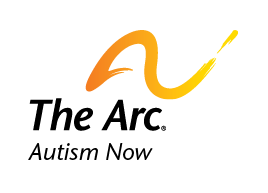Post-Transition Services, Activities, and Relationships for Young Adults with Autism Spectrum Disorder
Contents
Introduction
Transition from high school to adulthood is hard for any young adult. Activities after high school can affect future quality of life. For young adults with autism spectrum disorders (ASD), this time period may be even more difficult. In order to make a successful transition, it is important to understand the issues involved. This brief focuses on findings from three articles published in 2011 about services, activities, and relationships during and after transition.
Types of Activities
Taylor and Seltzer (2011b), surveyed 66 mothers of young adults with ASD who had left high school between 2004 and 2008 regarding the number of hours their son or daughter participated in different types of work and educational activities after leaving high school. The percentage of young adults with ASD participating in each type of activity included the following:
- Degree-seeking educational activities – 14%
- Competitive employment – 6%
- Supported employment – 12%
- Sheltered workshops or day activity centers – 56%
- No activity/Activity less than 10 hours per week – 12%
(Taylor and Seltzer 2011b)
There were some differences based on whether or not the young adult with ASD also had intellectual disability (ID).
- 47% of those without ID were in educational programs; 2% of those with ID were in educational programs
- Adults with ID and ASD were three times more likely to be participating in competitive employment
- Similar numbers of those persons with ASD with ID and those without ID were participating in supported employment
- Participants without ID were less likely to participate in day support services
- 24% of those without ID had no activity; 7% of those with ID had no activity
This data implies that the current system of services may not be adequately accommodating the needs of individuals with ASD who do not have ID (Taylor Seltzer 2011b).
After transition, most individuals with ASD lose access to many or all of the services they received while they were in the school system. There are often fewer services for adults, and parents often need to take responsibility for care, support, and service coordination (Taylor and Seltzer 2011a).
Services Used
Shattuck and others (2011) explored the types of services that young adults with ASD used during and after high school by using information from the National Longitudinal Transition Study – 2 (NLTS2). They found that adults with ASD used fewer services after high school than they had during high school.
Table 1. Percentage of Young Adults using Services During and After High School
| Service | Used during high school | After high school |
| Medical | 47% | 24% |
| Mental Health | 46% | 35% |
| Case Management | 64% | 42% |
| Speech Therapy | 75% | 9% |
(Shattuck et al. 2011)
Nearly one-fifth (39%) received none of these services after high school. African-Americans with ASD and people with ASD who had lower incomes were much more likely to receive no services. They were also less likely to use case management or medical services (Shattuck et al. 2011).
Relationships with Parents
The transition period can be very stressful for the young adult with ASD and their parents. Taylor and Seltzer (2011a) explored changes in mother-child relationships during and after transition. They studied 170 mother/child groups. During transition, these relationships often became more negative. This was especially true in the case of young people with ASD who did not also have ID and those who had service needs that were not being met. These findings suggest that these decreases in warmth may be related to frustrations with a lack of appropriate day activities for adults with ASD. However, over time, these relationships tended to improve, though this happened more quickly for mothers and daughters than for mothers and sons (Taylor & Seltzer 2011a).
References
- Shattuck, Paul, Mary Wagner, Sarah Narendorf, Paul Sterzing, Melissa Hensley. 2011. Post-High School Service Use Among Young Adults with an Autism Spectrum Disorder. Archives of Pediatrics and Adolescent Medicine. 165(2): 141-146.
- Taylor, Julie Lounds & Marsha Mailick Seltzer. 2011a. Changes in the Mother-Child Relationship During the Transition to Adulthood for Youth with Autism Spectrum Disorders. Journal of Autism and Developmental Disorders. 41: 1397-1410
- Taylor, Julie Lounds & Marsha Mailick Seltzer. 2011b. Employment and Post-Secondary Educational Activities for Young Adults with Autism Spectrum Disorders during the Transition to Adulthood. Journal of Autism and Developmental Disorders. 41: 566-574.
